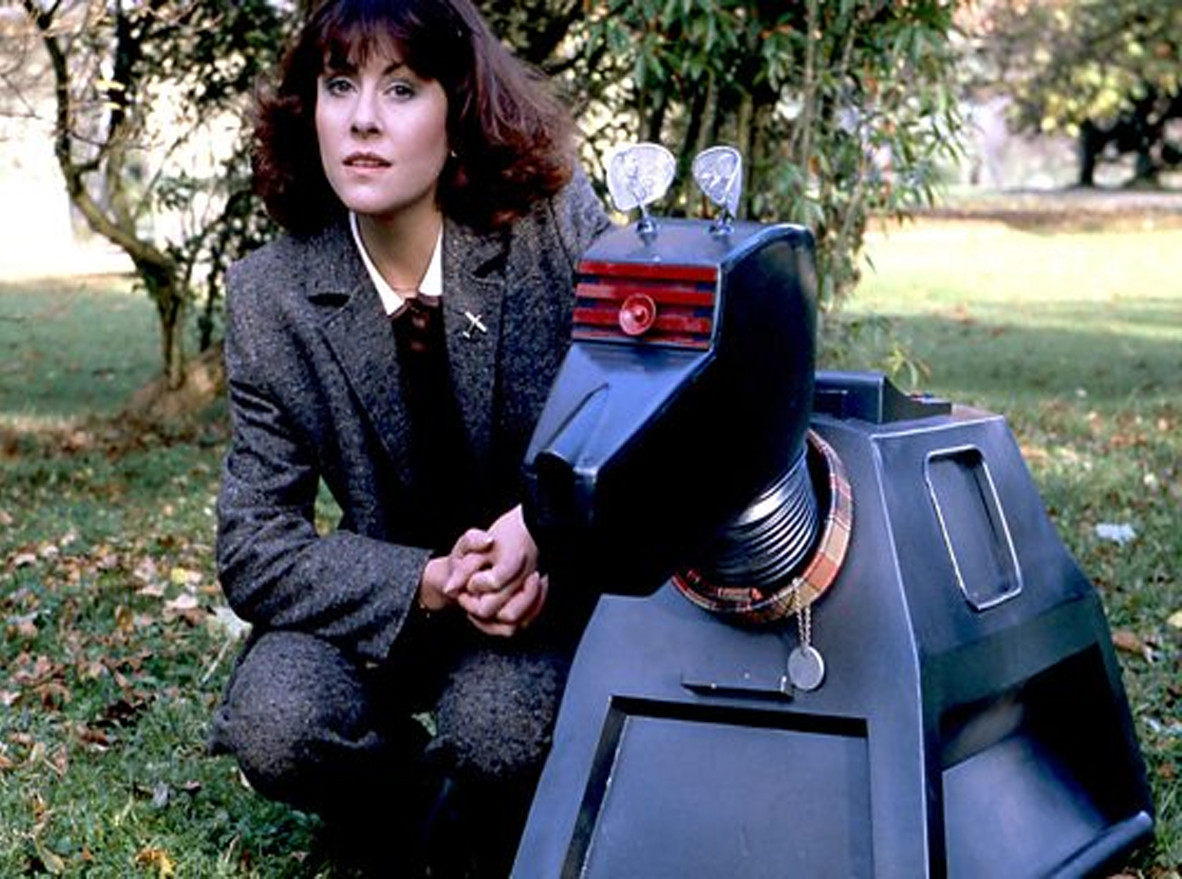For fans of classic science fiction television, Doctor Who stands as a monumental series, famed for its longevity and imaginative storytelling. With numerous seasons charting the adventures of the enigmatic Time Lord, each era brings a unique flavor and set of stories to the Whoniverse. Season 18, in particular, holds a special place in the hearts of many, marking a significant turning point for the show and serving as the final season for the beloved Fourth Doctor, portrayed by Tom Baker. This season is not just a collection of episodes; it’s a carefully curated transition, reflecting changes both in front of and behind the camera, and setting the stage for the series’ future.
Season 18 arrived at a time of deliberate change for Doctor Who. Under the new production team led by John Nathan-Turner, a distinct shift in aesthetic and tone was implemented. Gone were some of the perceived excesses of the Graham Williams era, replaced by a more streamlined and visually polished approach. This transformation was immediately apparent from the updated title sequence featuring a striking starfield effect and Peter Howell’s synthesized reimagining of the iconic theme music. These elements signaled a fresh direction, aiming to modernize the show while retaining its essential spirit.
June Hudson’s revamp of the Doctor’s costume was another key aspect of this overhaul. The flamboyant, bohemian style of the Fourth Doctor’s previous attire was subtly refined into a more cohesive and arguably more formal ‘costume’. While Tom Baker himself made some personal adjustments, favoring his own leather boots over the initially proposed brogues, the overall look became more consistent throughout the season, contributing to the sense of a new era. This attention to visual detail extended beyond just the Doctor, influencing the overall production design and aiming for a more cinematic feel within the BBC’s budgetary constraints.
Season 18 Episodes: A Journey Through the Fourth Doctor’s Swan Song
Season 18 comprises seven serials, each contributing to the overarching narrative of change and transition. Let’s delve into each story, exploring their individual strengths and how they fit into the broader context of Doctor Who seasons.
The Leisure Hive: A Cinematic Reinvigoration
The season opener, The Leisure Hive, immediately set a new standard. Director Lovett Bickford brought a consciously cinematic style to Doctor Who, evident from the story’s opening shots on Brighton beach. Uncommon camera techniques for BBC television at the time, such as long tracking shots, low-angle perspectives, and dynamic wipes, elevated the visual presentation. Beyond the direction, the story itself is a compelling sci-fi narrative featuring strong performances from Tom Baker and Lalla Ward as Romana. Guest actors like Adrienne Corri and a young David Haig delivered memorable performances, enhancing the story’s credibility and impact. The Leisure Hive is often cited as an underrated gem within Doctor Who seasons, showcasing the potential of the series to evolve visually and narratively.
Meglos: A Step Back to Familiar Territory?
Following the dynamism of The Leisure Hive, Meglos presents a slightly more traditional Doctor Who adventure, perhaps reminiscent of the preceding season. While not lacking in originality – featuring a plant-based villain and groundbreaking effects for 1980 – Meglos struggles to maintain the same momentum. However, it does offer notable elements, including a guest appearance by Jacqueline Hill, reprising her association with Doctor Who in a new role, a unique event in the show’s history. Despite some pacing issues and a slightly less engaged performance from Tom Baker, Meglos remains a noteworthy entry in discussions about Doctor Who seasons, especially for its inventive concepts and visual effects.
 The Leisure Hive The Fourth Doctor and Romana explore the Leisure Hive in Doctor Who Season 18, a story praised for its cinematic direction and strong performances.
The Leisure Hive The Fourth Doctor and Romana explore the Leisure Hive in Doctor Who Season 18, a story praised for its cinematic direction and strong performances.
Full Circle: A Young Writer’s Breakthrough and a New Companion
Full Circle marks a turning point, introducing a new companion, Adric, and showcasing the writing talent of a young fan, Andrew Smith. Smith’s story, drawing inspiration from Edgar Rice Burroughs, offered a clever and engaging narrative centered around evolutionary cycles and alien transformations. Full Circle resonated with younger viewers, demonstrating that fan creativity could find a place within the Doctor Who universe. The Marshmen and Marsh Spiders are memorable creature creations, highlighting the season’s strength in visual design. For Matthew Waterhouse as Adric, this story arguably presents his most compelling material within his tenure as companion, making it a significant episode when considering Doctor Who seasons and companion introductions.
State of Decay: Gothic Horror in Space
State of Decay, a story conceived by veteran Doctor Who writer Terrance Dicks, delves into gothic horror themes within a science fiction context. Originally titled The Vampire Mutations, it presents a tale of space vampires with classic horror tropes. While the story itself is solid and evocative of Hammer Horror films, the production values, in retrospect, don’t quite match the ambition. Costumes and sets sometimes lean towards the theatrical, detracting slightly from the intended atmosphere. Despite these limitations, State of Decay remains a popular story, exploring familiar vampire mythology within the unique framework of Doctor Who seasons.
 Full Circle Adric, the new young companion introduced in Doctor Who Season 18’s Full Circle, faces the Marshmen, showcasing the season’s creature design.
Full Circle Adric, the new young companion introduced in Doctor Who Season 18’s Full Circle, faces the Marshmen, showcasing the season’s creature design.
Warriors’ Gate: A Minimalist and Ethereal Departure
Warriors’ Gate stands out for its deliberate minimalist production design and unique narrative approach. Horror writer Steve Gallagher’s script deviates from typical Doctor Who structures, creating an ethereal and unsettling atmosphere. Director Paul Joyce, with uncredited contributions from Graeme Harper, returns to the cinematic style established at the season’s beginning. The story’s sets, particularly the Warriors’ Gate itself and the spaceship, are strikingly effective despite their simplicity. The departure of both Romana and K-9 in this story marks a significant shift in the companion dynamic, paving the way for future changes within Doctor Who seasons. The visual style even evokes comparisons to Sapphire & Steel, adding to its distinctive place in the series’ history.
The Keeper of Traken: Regal Sci-Fi and the Master’s Shadow
The Keeper of Traken introduces Nyssa, another new companion, and marks the return of the Master, now in a decayed form played by Geoffrey Beevers. This story embraces a “regal science fiction” aesthetic, reminiscent of Dune in its world-building ambitions. The intricate society of Traken and the enigmatic Keeper create a rich and detailed backdrop, hinting at deeper lore and political complexities. While the world of Traken is ultimately short-lived within Doctor Who seasons, its depth and imaginative scope make The Keeper of Traken a memorable and highly regarded episode.
 Warriors Romana and K-9 in Warriors’ Gate, a visually striking and narratively unique Doctor Who Season 18 episode marking their departure.
Warriors Romana and K-9 in Warriors’ Gate, a visually striking and narratively unique Doctor Who Season 18 episode marking their departure.
Logopolis: The Fourth Doctor’s Farewell
Logopolis serves as the dramatic conclusion to Season 18 and the final story for Tom Baker’s Fourth Doctor. Script editor Christopher H. Bidmead crafted an ambitious narrative revolving around mathematics and cosmic entropy, surprisingly accessible despite its complex themes. The Master returns again, now in the stolen form of Tremas, played by Anthony Ainley, who would become the definitive Master for the 1980s. Logopolis also introduces Tegan Jovanka, completing the new TARDIS crew that would define the early era of the Fifth Doctor. The Fourth Doctor’s regeneration in Logopolis is one of the most impactful in the series’ history, triggered by a fall from a radio telescope, and featuring a poignant montage of past companions, solidifying its place as a landmark episode within Doctor Who seasons.
 K-9 and Company K-9 and Sarah Jane Smith in K-9 and Company, a spin-off pilot included in the Doctor Who Season 18 Blu-ray set.
K-9 and Company K-9 and Sarah Jane Smith in K-9 and Company, a spin-off pilot included in the Doctor Who Season 18 Blu-ray set.
K-9 and Company: A Spin-Off Experiment
The Season 18 Blu-ray set also includes K-9 and Company, a pilot episode for a proposed spin-off series featuring K-9 and former companion Sarah Jane Smith. While the spin-off didn’t materialize, the pilot itself offers an interesting glimpse into a potential direction for the Doctor Who universe. The story delves into black magic and occult themes, a departure from the series’ usual science fiction focus. While entertaining and well-produced, the reliance on this genre may have been a limiting factor for a full series, potentially feeling repetitive and tonally inconsistent with the core Doctor Who concept. Nevertheless, K-9 and Company is a valuable curiosity for fans exploring the wider context of Doctor Who seasons and its spin-off potential.
 Logopolis The Fourth Doctor’s dramatic regeneration scene in Logopolis, Doctor Who Season 18 finale and a pivotal moment in the show’s history.
Logopolis The Fourth Doctor’s dramatic regeneration scene in Logopolis, Doctor Who Season 18 finale and a pivotal moment in the show’s history.
Blu-ray Release: Delving Deeper into Season 18
For fans seeking to further explore Doctor Who seasons, particularly Season 18, the Blu-ray release offers a wealth of bonus materials. Features like “Behind the Sofa” provide entertaining fan reactions, while “Weekend with Waterhouse” offers insights into the actor behind Adric. While some new special effects options are included, they remain secondary to the core appeal of the classic episodes themselves. The Blu-ray set serves as a comprehensive package for enthusiasts wanting to revisit and appreciate this transformative season in high definition.
A Season of Transition and Lasting Legacy
Season 18 of Doctor Who is more than just a collection of episodes; it represents a carefully orchestrated transition, both narratively and stylistically. It marked the end of an era with Tom Baker’s departure, while simultaneously laying the groundwork for the future of the series. The season’s emphasis on visual polish, tighter storytelling, and introduction of new companions contributed to a revitalized Doctor Who for the 1980s. While opinions on the changes implemented in Season 18 are varied among fans across Doctor Who seasons, its significance as a turning point and its overall quality are undeniable. For those looking to understand the evolution of Doctor Who and appreciate the Fourth Doctor’s final bow, Season 18 remains an essential chapter in the show’s enduring legacy.
